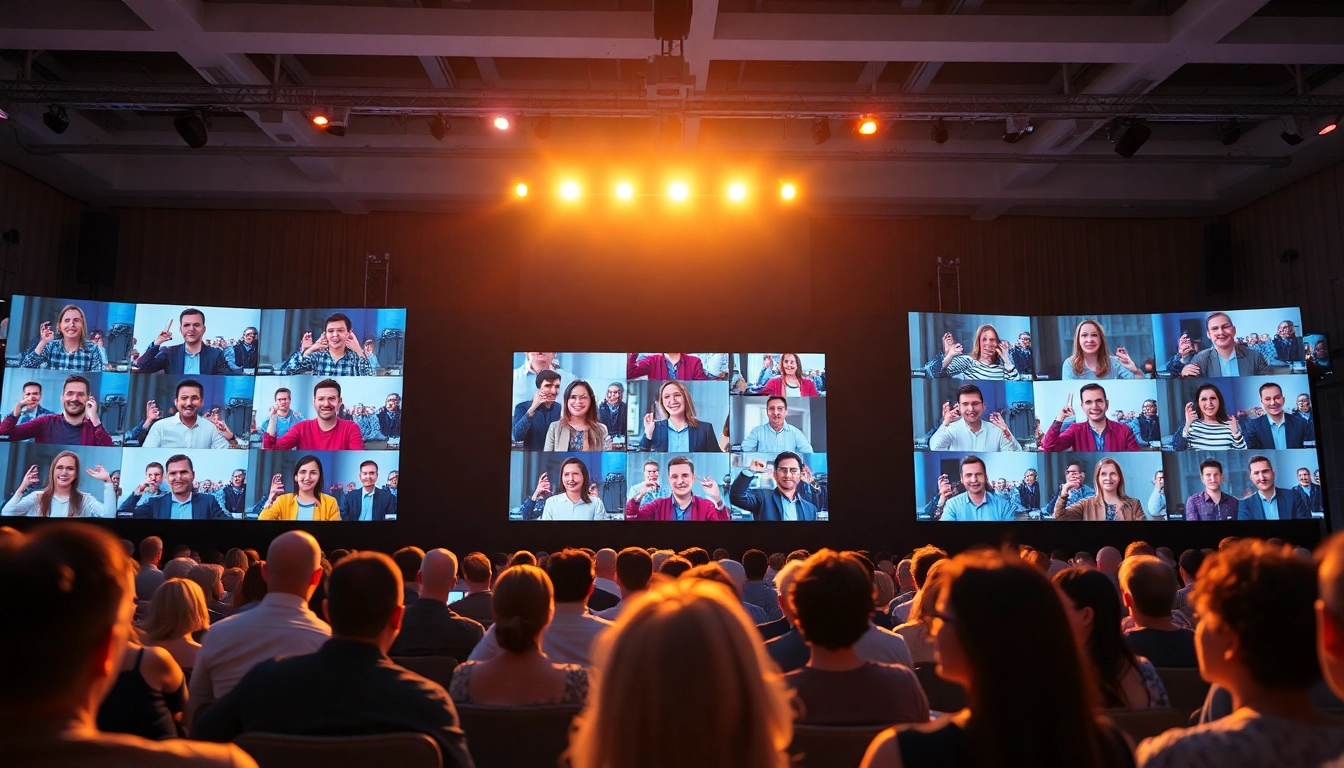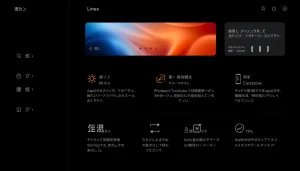Enhancing Engagement with the Virtual Audience System for Live Events
In today’s digital landscape, creating engaging interactions during live events has become essential for success. The integration of a Virtual Audience System significantly enhances the experience for both organizers and attendees. By bridging the gap between physical and virtual participation, these systems enable more inclusive, interactive events that can reach broader audiences and adapt to their needs. This comprehensive guide explores the intricacies of Virtual Audience Systems, from understanding their fundamentals to looking ahead at future trends that will shape their development.
Understanding the Virtual Audience System
What is a Virtual Audience System?
A Virtual Audience System refers to the technology and methodologies used to facilitate online participation in live events. It creates an interactive platform where participants can contribute, engage, and network remotely, thus mimicking the experience of being present at the event physically. This system encompasses various tools, including video streaming, real-time chat, social media integration, and audience polling functionalities. The goal is to create a seamless experience that encourages interaction and participation from virtual attendees, thereby enhancing the overall event experience.
Key Features of Effective Virtual Audience Systems
An effective Virtual Audience System possesses several key features that facilitate interaction and engagement:
- Real-Time Engagement: Live chat functionalities, Q&A sessions, and live polling help keep the audience engaged and provide immediate feedback.
- Intuitive User Interface: A user-friendly interface is crucial for ensuring that attendees can easily navigate the platform without technical difficulties.
- Accessibility: The system should cater to varying levels of digital literacy and ensure broad accessibility for all potential participants.
- Integration with Social Media: Allowing attendees to share their experiences on social platforms can enhance visibility and engagement.
- Analytics and Reporting: Tools that track attendance, engagement duration, and participation rates are invaluable for measuring event success.
Benefits for Event Organizers and Attendees
The implementation of a Virtual Audience System brings a plethora of benefits to both event organizers and attendees:
- Wider Reach: VIRTUAL EVENTS can reach a global audience, significantly increasing the participant pool without the costs associated with physical venues.
- Cost-Effectiveness: Reduced expenses related to travel, accommodation, and venue hiring make it financially advantageous.
- Flexibility: Event organizers can easily adapt content and structures to suit online formats, such as on-demand content and diverse session types.
- Increased Engagement: Tools like live polls and interactive sessions ensure attendees feel involved and valued, enhancing satisfaction levels.
- Better Data Collection: Organizers can analyze attendee behavior, preferences, and feedback to improve future events, thus creating a cycle of continuous improvement.
Setting Up Your Virtual Audience System
Choosing the Right Technology
Selecting the appropriate technology is the foundation for a successful Virtual Audience System. Organizers must assess various aspects, such as scalability, ease of use, and feature set. Popular options include platforms like Zoom, Microsoft Teams, and specialized virtual event platforms like Hopin or Remo. Here are key considerations when choosing your technology:
- Scalability: Ensure the platform can support your expected audience size, especially for larger events.
- Feature Set: Evaluate the essential features required, such as breakout rooms, networking capabilities, and integration options.
- User Support: Opt for providers that offer robust technical support and training resources to aid in event setup and execution.
- Security: Considering the privacy and data protection standards is crucial to secure participant data.
Integrating with Event Platforms
Integration with other event management platforms is vital for streamlining the execution of events, from registration to follow-up. This might include linking your Virtual Audience System with platforms like Eventbrite or Cvent for ticketing, as well as CRM systems for tracking interactions. Successful integration provides a cohesive experience for attendees and simplifies logistical processes for organizers.
Best Practices for User Experience
To optimize the user experience, consider the following best practices:
- Pre-Event Testing: Thoroughly test the technology before the event to troubleshoot issues and ensure a smooth experience for all participants.
- Clear Communication: Provide participants with comprehensive guides and support to help them navigate the system effectively.
- Engaging Content: Tailor your content to suit an online audience, incorporating visuals, videos, and interactive elements to keep engagement high.
- Social Interaction: Make space for social interaction, such as breakout rooms and chat functions, to foster networking and community.
Engagement Strategies Using a Virtual Audience System
Interactive Tools and Features
Interactive tools lie at the heart of virtual engagement. Features such as virtual hand raising, emojis, and chat functions can effectively gauge audience sentiment and excitement. Utilizing a combination of these tools will help create a dynamic and proactive environment where participants feel more inclined to engage.
Creating a Community Experience
Building a community around your virtual event can keep attendees engaged even after the event concludes. This can include establishing forums, dedicated social media groups, and ongoing discussions that allow participants to continue interacting, networking, and sharing resources long after the event has ended.
Live Polling and Q&A Sessions
Live polling and interactive Q&A sessions are highly effective strategies for encouraging participation. Not only do they provide immediate feedback, but they also make attendees feel valued by allowing them a voice in discussions. Consider incorporating these elements thoughtfully:
- Use Analytics: Analyze the results of polls for continuous improvement and to shape future content.
- Featured Questions: Encourage participants to submit questions ahead of time and showcase the most relevant during the event.
- Feedback Surveys: Post-event surveys help to gather insights on users’ experiences, which is vital for future planning.
Measuring Success with a Virtual Audience System
Key Performance Indicators (KPIs)
Measuring the success of a Virtual Audience System involves tracking various KPIs. Some crucial metrics include:
- Attendance Rate: The percentage of registrants who attend the event live.
- Engagement Rate: Involves measuring the interactions per participant, such as chat messages or poll responses.
- Feedback Ratings: Post-event surveys provide insight into the attendees’ satisfaction and areas for improvement.
- Conversion Rates: If applicable, track how many attendees took actions that align with your event goals, such as signing up for a newsletter or purchasing a product.
Feedback Loops and Continuous Improvement
Establishing feedback loops is critical for enhancing future events. Encourage participants to provide feedback during and after the event through surveys, open questions, and social media engagement. Acting on this feedback can lead to continual enhancements in technology, engagement strategies, and content delivery, allowing you to refine your Virtual Audience System systematically.
Case Studies and Success Stories
Examining case studies of successful virtual events can provide insight into what works well. For instance, an annual tech conference transitioned to an entirely virtual setup, leveraging a Virtual Audience System to maintain engagement. By incorporating interactive panels, themed breakout rooms, and extensive post-event follow-ups, they managed to achieve a 40% increase in attendance compared to previous years.
Future Trends in Virtual Audience Systems
Innovations on the Horizon
The landscape of Virtual Audience Systems is constantly evolving. Innovations such as virtual reality (VR) and augmented reality (AR) are poised to change how participants experience events. By allowing attendees to immerse themselves in virtual environments and interact as if they were physically present, the future of virtual events looks incredibly promising.
Adapting to Changing Audience Expectations
With technological advancements come changing expectations. Today’s audiences demand more personalized, engaging experiences. Event organizers will need to remain vigilant in adapting their offerings to meet these growing demands, focusing on customization and interactivity that resonates with participants.
The Role of AI in Virtual Audience Engagement
Artificial Intelligence (AI) will play a more significant role in curating content and automating engagement processes. From recommending tailored sessions for users based on their interests to using chatbots for immediate attendee support, AI can help streamline the user experience while enhancing engagement.








Post Comment